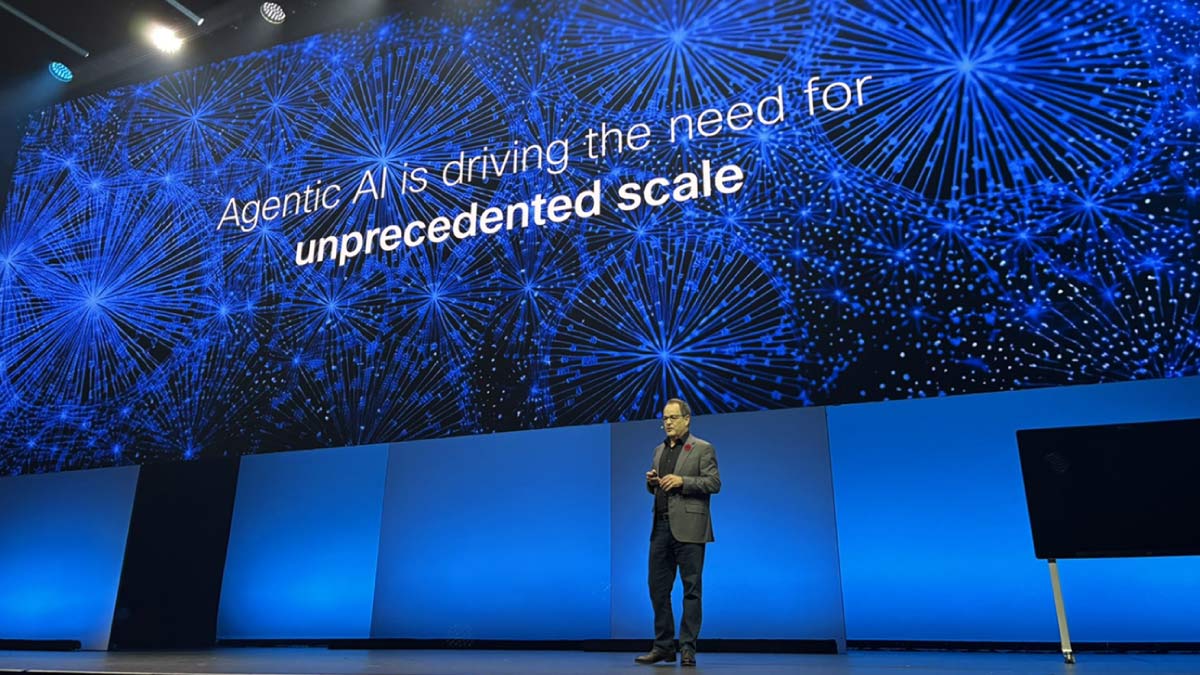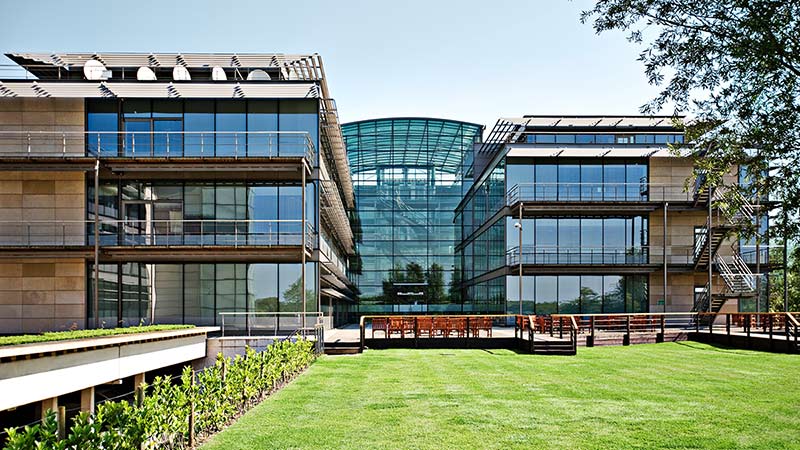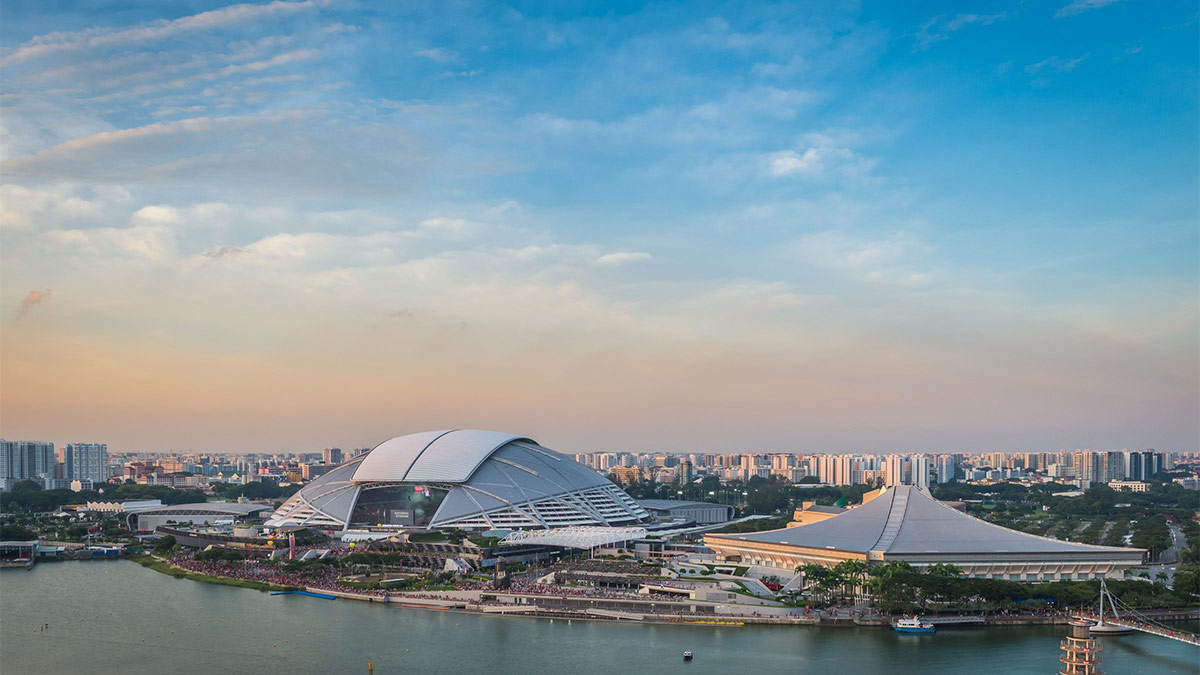When we think of buildings, we often imagine the physical structures we enter in order to access our offices, schools, campuses, and manufacturing floors. But the building of the future is no longer just the four walls we work in—it is as agile and programmable as the applications you have on your devices. As revealed through the COVID-19 pandemic, businesses are now realizing the need to accelerate their digital projects as well as execute on a return-to-office strategy. With the ever-changing scenarios we face with health and safety, hybrid work and sustainability efforts, buildings need to be incredibly smart, digitally connected, and able to adapt on the fly. That way, as things change, buildings and the companies employees that inhabit them can adapt as well, with agility and flexibility.
Cisco has long been in the smart building game, though our customers have largely been focused on achieving their green energy and sustainability goals. However, smart buildings are taking on a whole new set of use cases. Advancements in Universal Power over Ethernet (UPOE) technology have expanded the types of end points that can be powered via the network, allowing for better control of HVAC, lighting, and more. But the programmable building of the future will need to be the intersection of both green buildings and a trusted and healthy workplace, where employees can feel empowered to work safely and securely.
Safely back to work
Cisco’s recent global workforce survey shows 97 percent of employees want changes to make them feel safer at work. With smart buildings, the company aims to enable a safe return to the office with things like capacity level visibility and intelligent touchless experiences.
See also: CIO Insights 6: VP of IT Bailey Szeto talks return to office
It’s all powered by network-based monitoring, or a combination of Cisco-powered technologies that help control, configure, and connect everything throughout the building. IoT endpoints like security sensors, phones, badging systems, and more are all connected to the building, which the Catalyst 9000 switching and wireless technologies then help configure and set up. Cisco DNA Center network management helps control the network aspect of endpoints, not only governing their actions but also gaining insights into performance and application experience. Also baked into every step of connecting, configuring, and controlling is Cisco security. Because every endpoint and IoT device is a backdoor mechanism into the network, security is built into every piece of technology.
So how does this look like in a regular day of visiting the office? Let’s walk through it:
- Real time occupancy: It’s a Monday and you step into office Building 10 for the first time in weeks! As you swipe in with a badging system, Cisco DNA Spaces’ rich location-based services visualize the number of employees who are in the building and on campus in real-time. The number on the Cisco DNA Spaces dashboard ticks up as you enter. Using both Cisco DNA Spaces and Meraki MV smart cameras, a building manager can see real time footfall and presence in the Camera Metrics App. By understanding location occupancy, seeing trends, and comparing historical averages, the manager can optimize for the average number of employees in this specific building on a Monday.
- Meeting room finder: You have an upcoming meeting and need to find a free conference room. Cisco DNA Spaces and MazeMap work together to find your current location as well as any open meeting rooms. After selecting a desired room, the map gives you directions for the quickest way there.
- Density threshold alerts: Prior to allowing employees back into Building 10, the company decided to only let 500 employees in at any given time. A couple of hours after you first entered, you receive a Webex Teams notification that says the density threshold has passed 100 percent and to halt entry of new visitors. This notification is sent to all employees across Webex Teams, SMS, email, or API. With seamless access between the network and a comprehensive cloud platform like Meraki MV and MT environmental sensors, operations teams can proactively restrict door access when the density threshold is approaching.
- Proximity reporting and contact tracing: Another employee who was in Building 10 the week prior uses the ServiceNow app to report that they tested positive for COVID-19. An HR manager can use Cisco DNA Spaces to create a proximity report, providing visibility into the areas where the person visited in the building. Notifications are sent out to other employees who were in the same space, and the HR Manager arranges health status interviews for these employees. Being notified, the building manager utilizes the HVAC system to ramp up fans, encouraging airflow within the building. It is important to note that DNA Spaces only collects and processes non-sensitive personal data, and customers can choose the privacy settings that align to their strategy. Cisco does not store any private customer data related to health and safety.
User experience is crucial for all of these steps, as the smart building technology encourages contactless engagements and space utilization across buildings, rooms, and desks. Safety information is shared with employees contextually based on where they are, via their personal devices or on digital signage in lobby areas.
Cisco and its partner technology not only promote a healthy and safe environment, but a space where employees can feel the confidence to be productive.
Cut costs and keep it sustainable
Promoting a healthy workplace also means creating a space that is ultimately better for the well-being of the earth. Cisco network-based monitoring and control of temperature, lighting, air quality, and other ambient characteristics can significantly reduce costs for the company, improve occupant satisfaction, and ensures less energy is being used.
With Cisco, utilities like water, power, and gas meets the 4th utility—internet and network management. The converged 4th utility with a unified IT/OT managed network helps IT managers quickly find and isolate issues, whether HVAC, temperature, lighting, or more. Processes that are digitally transformed with custom workflows can remarkably decrease operating expenses.
See also: The Inclusive Future starts with a liveable planet
“Smart building technology lowers upfront construction cost for cabling, installation, and configuration,” says Cisco product marketing manager Jeff Meek, “It also shortens construction and retrofit time. It is easier to design, easier to secure with a converged network, and can dramatically reduce building energy consumption when deploying PoE powered lighting, sensors, and controllers that can be centrally managed."
A large part of the smart building conversation is also about greenhouse gas emissions, which trap and hold heat in the atmosphere and create an increase in global warming. A 2020 US EPA report shows that a quarter of all global greenhouse gases are produced during the generation of electricity. To combat this, major cities like New York City are implementing new laws on building owners to dramatically reduce energy consumption. The NYC Climate Mobilization Act requires buildings to meet specific emissions targets, ultimately hoping to meet a city-wide goal of reducing total carbon emissions by 80 percent by 2050.
NYC financial company PineBridge Investments needed to meet this goal, and they also faced new challenges like office space flexibility, high construction costs, and reducing possibilities of security breaches. Partnering with Cisco, PineBridge implemented the Catalyst 9400 Series with 90W Cisco UPOE+, which dramatically increasedtheincreased the power from each ethernet port.
“It used to be the case that if you had 600 lights in a space, you would need 600 ports,” says Eric Madeson, Head of Infrastructure and Chief Information Security Officer, PineBridge Investments, “Now, I can probably get three lights in each port, it’s pretty clear that it’s much bigger savings.”
In partnership with Cisco, PineBridge was able to cut power costs by two-thirds, cut construction costs in half, combine IT and OT systems into one platform for easier control, and develop a strong security posture on all elements of the network.
Smart buildings at the center
In the venn diagram of green energy and a safe return to work, smart buildings sit right at the center. Whether for sustainability or to promote health in employees, the world faces real, ever-changing challenges that need to be addressed at a foundational level. Cisco smart buildings can help reduce greenhouse gas emissions, create a touchless and intelligent workspace, and it can all be reprogrammed as needs change in the future.
To learn more, see Cisco's Smart Buildings Solutions.
###
We welcome the re-use, republication, and distribution of "The Network" content. Please credit us with the following information: Used with the permission of http://thenetwork.cisco.com/.




